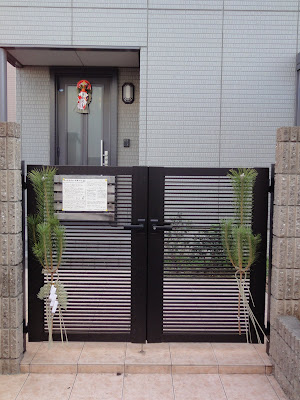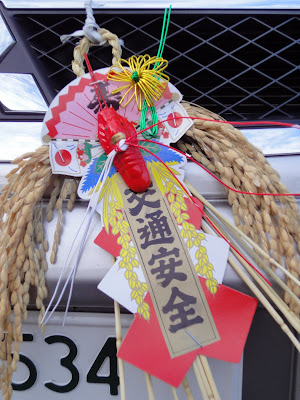
I went to Tokorozawa Shrine last week for the 'Hatsu-mode(初詣),' the first visit of the year.
Like many people who go to the shrine, I got an 'Omikuji(おみくじ).' It is a small piece of paper with a fortune written on it. You can find it in most temples and shrines, especially at the start of the year.

All the Omikuji are in a box like this, where you pay 100yen, and pick one out.

Inside the box, there are many (well, not so much in this one...) Omikuji.

When people open it, everyone always looks for the main fortune that tells you how lucky or unlucky you are. It has many levels ranging from 'Dai-kichi(大吉),' the best of luck, to 'Dai-kyo(大凶),' unbelievably bad luck.
I got Dai-kichi this year for the very first time! Yay! But the Omikuji not only tells you your fortune but gives you advise as well. Like mine said that my year would be full of wonderful experiences but that things could go downhill if I don't appreciate it. Good advice.

So what can you do when you get 'Kyo(凶),' a bad luck Omikuji? Well, you can tie your Omikuji as high as you can on branches of trees within the shrine. I'm not quite sure why, because there are so many different traditions regarding what to do with an Omikuji, but I think part of the reason is that some believe by tying it to a tree, you can leave the bad luck there with the tree.
Very interesting, this Omikuji business! I hear there are special Omikuji to tell your fortune in love or money.
I'm curious if there's something like this in other countries?

















































